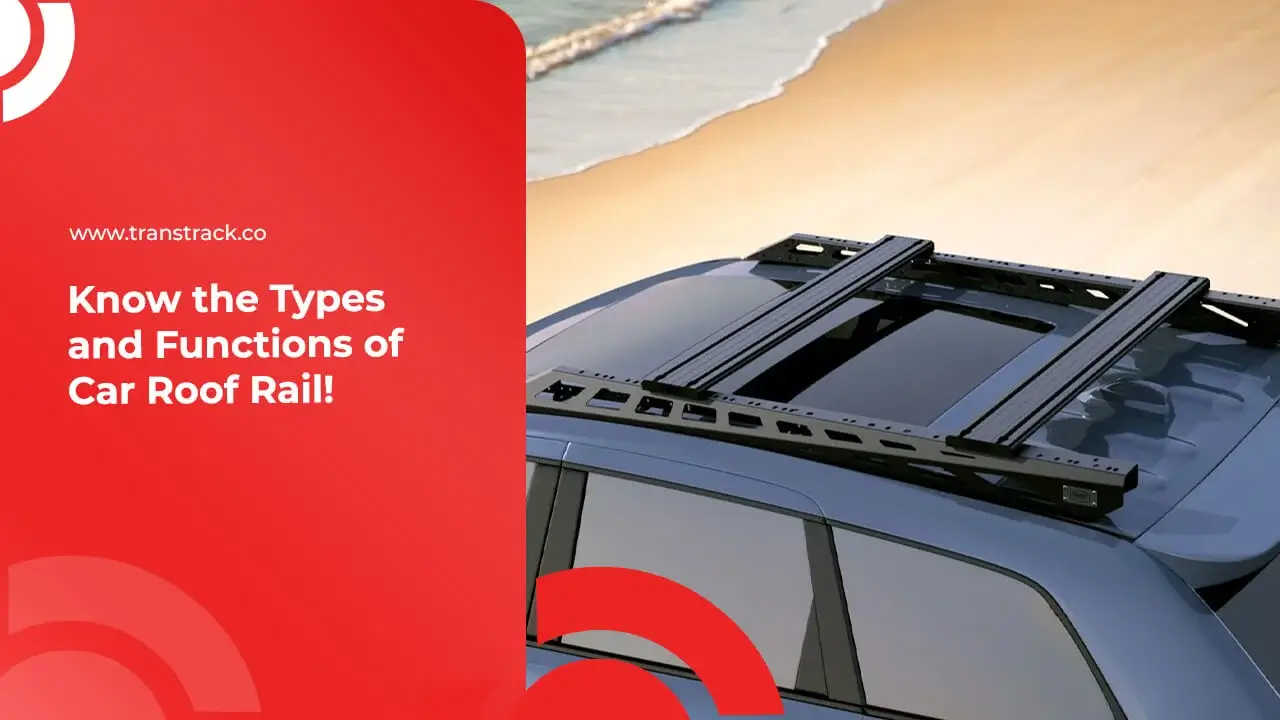Know the Types and Functions of Car Roof Rail!

Have you ever noticed a car that has an interesting accessory on its roof? A roof rail is one such feature that gives a vehicle a more attractive look and also significantly enhances its functionality. In this article, we will explore the various aspects of roof rails, from their basic functions to the practical benefits they offer to modern drivers.
Roof rails, with all their functional and aesthetic advantages, have become an increasingly popular part of vehicle design. Let’s take a deeper dive into how roof rails not only add aesthetic value to your vehicle, but also open up new opportunities for practical use, from additional storage to complementary outer accessories.
Ready to dig deeper into how roof rails can enhance your driving experience? Let’s explore together through the following article TransTRACK!
What is a Roof Rail
A roof rail is a part of a car’s exterior design that is located on the roof. It serves as a place to attach accessories such as additional luggage racks, bike racks, or even ski racks. In addition, the roof rail can also be used as a handle when installing or cleaning the top of the car. In addition to its practical function, a roof rail can also add to the aesthetics and style of the vehicle.
Roof Rail Types
Roof Rail types can generally be divided into several categories, including C-Type and Flush Mounted Type:
Type C
- C-type roof rails are often made of materials such as aluminum or plastic that are sturdy yet lightweight.
- It resembles a curved letter “C” in shape, with the inside forming a hollow that allows for hooking accessories or tools.
- C-type roof rails are often quite rigid in design and separate from the surface of the car’s roof, giving it a more striking appearance.
- Because it protrudes from the roof, the C-type roof rail can also provide additional protection for the car roof from scratches or damage when loading or transporting goods.
Flush Mounted Type
- The flush mounted roof rail integrates flush with the car’s roof surface, often giving it a cleaner and more aerodynamic look.
- It is usually made of the same material as the C-type roof rail, but a different installation process allows it to sit flush with the roof.
- The flush mounted roof rail tends to have a sleeker and less conspicuous design, giving the impression of a more modern and elegant car.
- Although it does not protrude from the roof, the flush mounted roof rail still has the capacity to hold a considerable amount of weight and can be used to hook accessories or equipment.
In choosing between these two types of roof rails, consider your functional needs and aesthetic preferences, as well as factors such as ease of installation, durability, and compatibility with additional accessories you may use.
Functions of Roof Rail
Roof rails have several important functions in the context of automobiles:
Additional Storage
One of the main functions of a roof rail is to provide a place to store additional items on top of the car. By using a roof rack or other accessories attached to the roof rail, you can carry items such as extra luggage, bicycles, surfboards, or other sports equipment that won’t fit in the trunk of the car.
Car Aesthetics
In addition to its practical function, these accessories can also improve the aesthetics of a car. A carefully chosen roof rail design can add visually appealing details and enhance the overall look of the vehicle. A well-installed roof rail can give the car a more rugged and memorable feel.
Roof Rack Support
Roof rails also serve as a support for roof racks or other support systems. A roof rack attached to a roof rail allows you to carry large and long items on top of your car safely and easily. The roof rail provides a sturdy structure to support the weight carried by the roof rack, allowing you to carry items comfortably and without the risk of damage to the car.
With the knowledge of the functions and benefits of car roof rails, you are now ready to deliver an even better driving experience. But don’t stop there! Make every moment of your journey safer, more comfortable, and more efficient with the TransTRACK Vehicle Maintenance System.
With TransTRACK Vehicle Maintenance System, you can ensure your vehicle is in the best condition at all times. TransTRACK gives you access to advanced features that allow you to track vehicle maintenance schedules, receive required maintenance alerts, and manage your vehicle’s maintenance history with ease.
With TransTRACK, you can:
- Set Maintenance Schedule: No more worrying about when to perform routine maintenance. TransTRACK will help you set up a maintenance schedule according to the manufacturer’s recommendations and the condition of your vehicle.
- Receive Important Alerts: Get immediate notifications when your vehicle needs maintenance. TransTRACK will notify you of important alerts like oil changes, brake checks and more.
- Manage Maintenance History: Stay organized with detailed vehicle maintenance history. TransTRACK stores your maintenance records so you can easily access the information at any time.
Don’t let vehicle maintenance become a burden. With TransTRACK Vehicle Maintenance System, you can keep your vehicle in top condition and ready for your next adventure. Get TransTRACK today and enjoy a more reliable and efficient vehicle!
Topic





